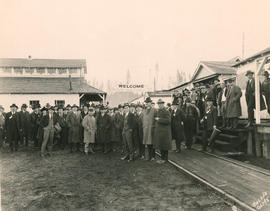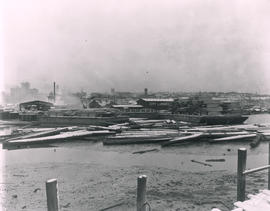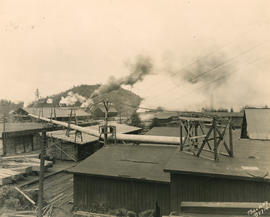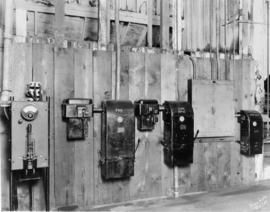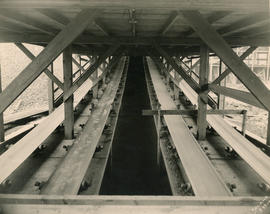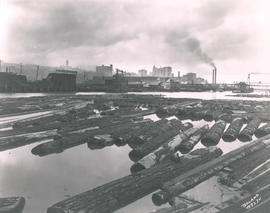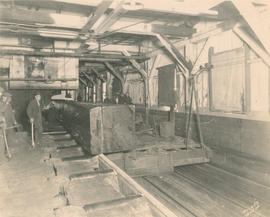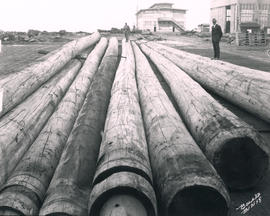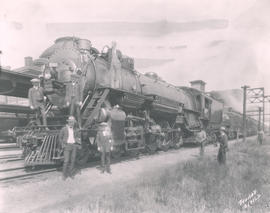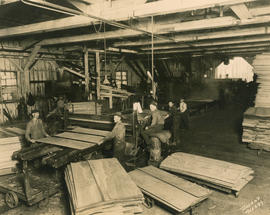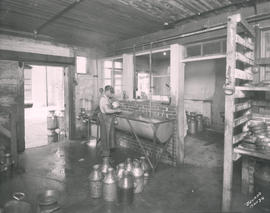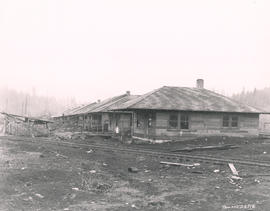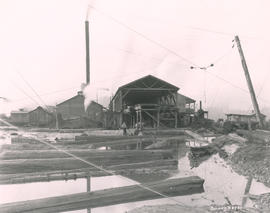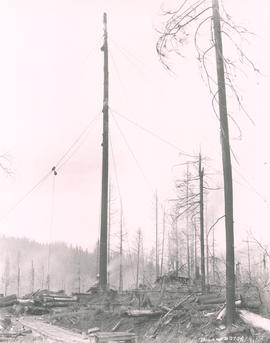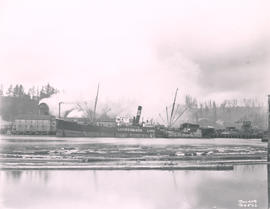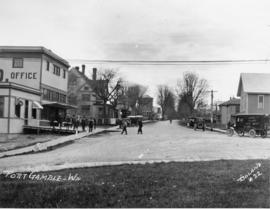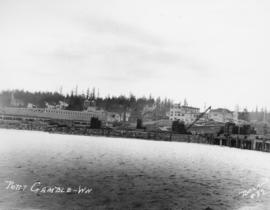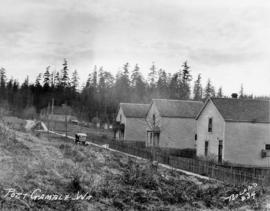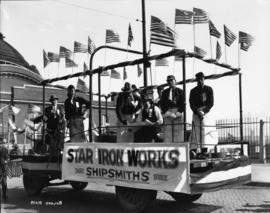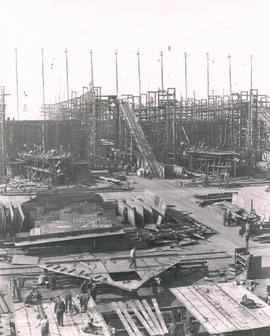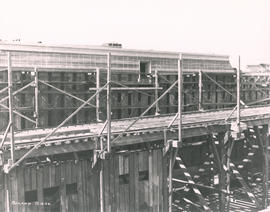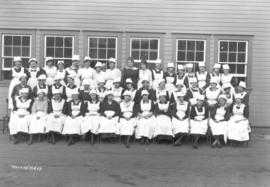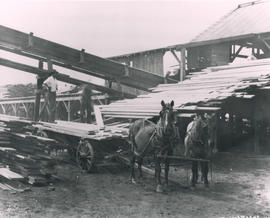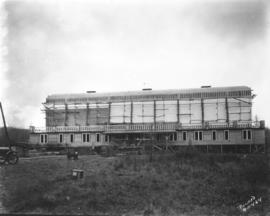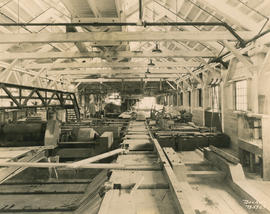- Item
- 1922-10-28
Part of Marvin Boland Photographs
These were some of the 500 delegates to the 13th annual Pacific Logging Congress Convention held in Tacoma from October 25-28, 1922. Everett Griggs, president of the St. Paul & Tacoma Lumber Co., welcomed the delegates to Tacoma, the "Lumber Capital of America," in his October 25th address. The firm invited attendees to visit its lumber camp at Kapowsin on the final day of the convention where they are believed to be pictured above. There the group was able to observe the most up-to-date methods of logging by high leads and Lidgerwood skidders. L.T. ("Tom") Murray, founder of the West Fork Timber Co. of Tacoma, was president of the Congress and may have been included in the group congregated above. TPL-2043; G75.1-137 (TDL 10-23-22, p. 5-article; TDL 10-25-22, p. 1-article; TDL 10-26-22, p. 1-article)
Pacific Logging Congress; Meetings--Tacoma--1920-1930; Lumber industry--Tacoma--1920-1930;
